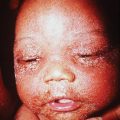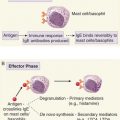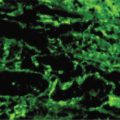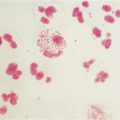CASE 19
A married couple in your practice is planning their first pregnancy. They are both asthmatics, on regular inhalant therapy. They have both been hospitalized twice and one of them was intubated once for exacerbations. They are concerned to know the likelihood of a genetic predisposition, environmental factors, and so on, that might affect development of asthma in their child. You discuss these issues and the classic presentation and diagnosis of asthma.
QUESTIONS FOR GROUP DISCUSSION
1. In very general terms, what are the two main causes of airway obstruction in asthma (see Etiology).
2. Recent studies have attempted to unravel the complexities underlying genetic association and susceptibility to asthma using positional cloning. What is chromosomal linkage? What is the assumption in this approach?
3. Discuss the criteria that have been used to identify atopic individuals. List various gene clusters that are linked to polymorphic genes whose allelic expression is, in turn, associated with atopy in individuals.
6. Explain the rationale for speculation that the presence of a dog in a family or a rural lifestyle is protective for allergic diseases.
7. Under what circumstances do high levels of IgE correlate with a particular allelic form of FcεR1-β in some Australian aborigines parasitized with helminths?
8. Explain why recent studies are focusing on the role of polymorphisms in the interleukin [IL]-4Rα component of the receptors for IL-4 and IL-13 as a contributory factor in the genetics of asthmatic disorders.
9. Inhaled glucocorticoids and or leukotriene receptor blockade is the presently accepted therapy for asthma. What are leukotrienes? How are they generated? What are the roles of phospholipase A2 and phospholipase C in leukotriene production?









